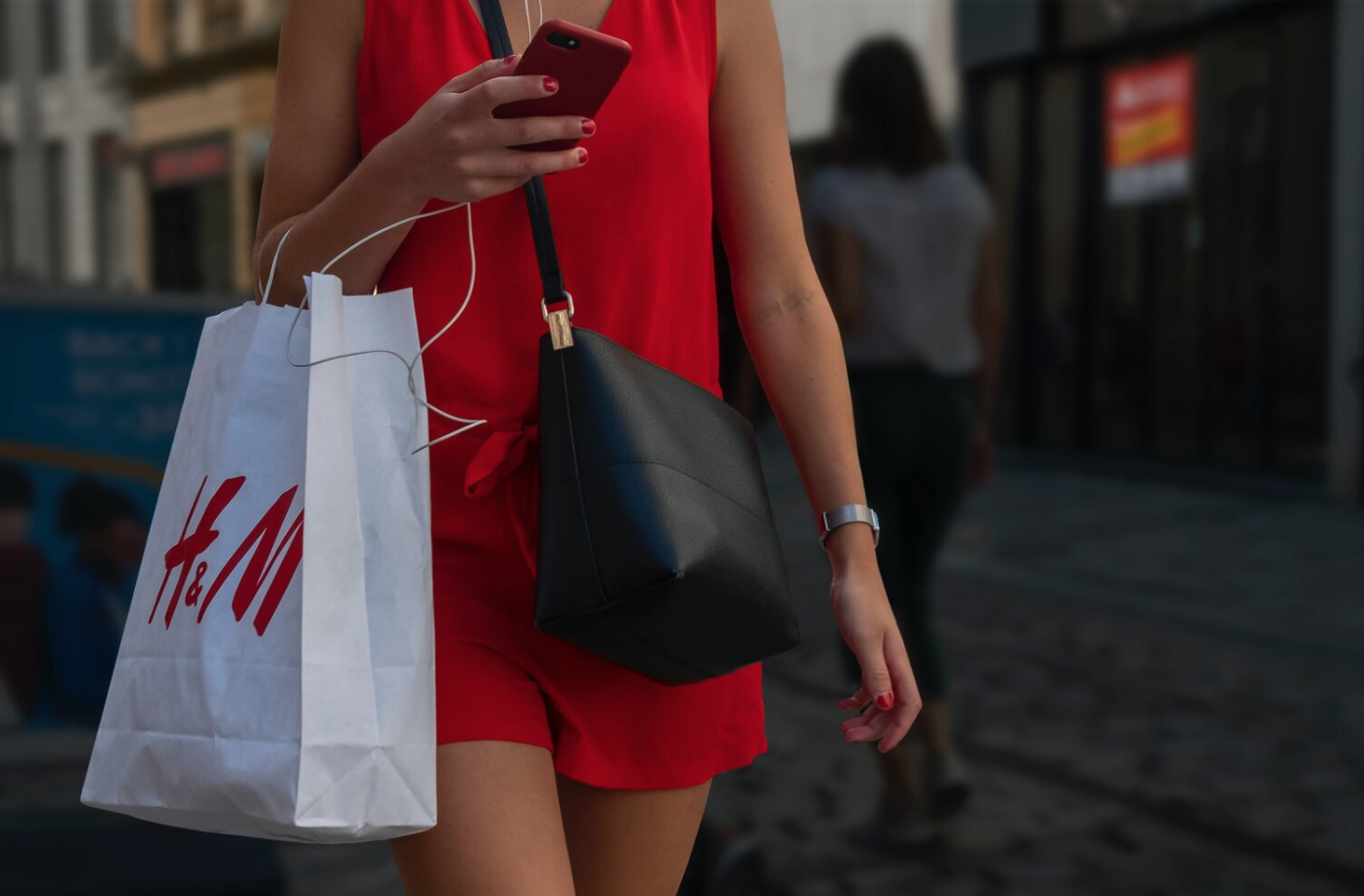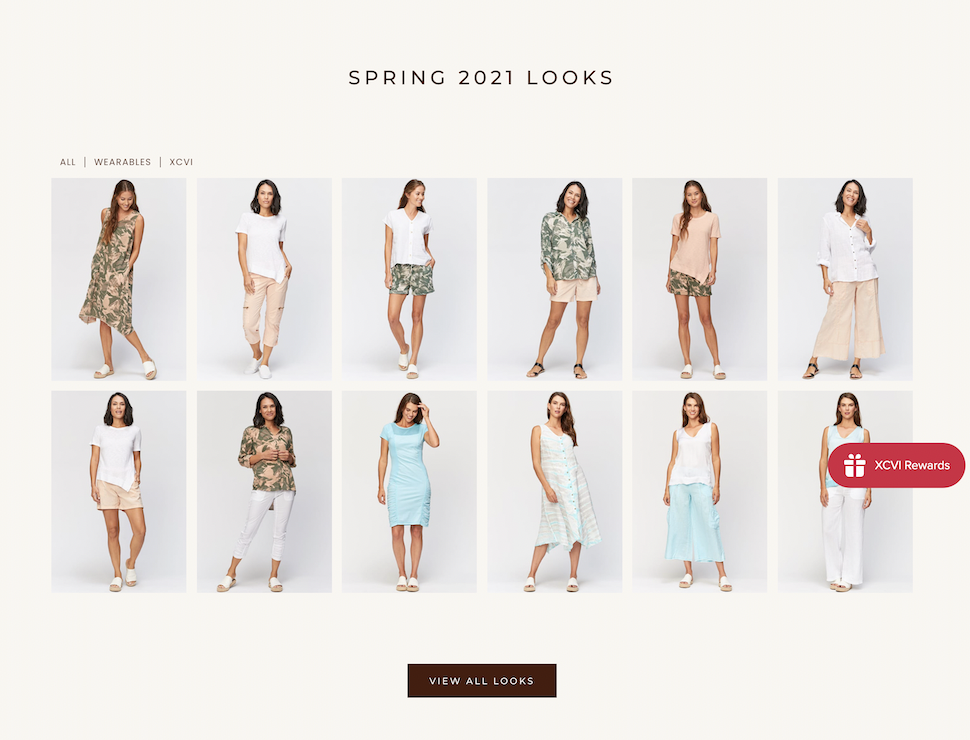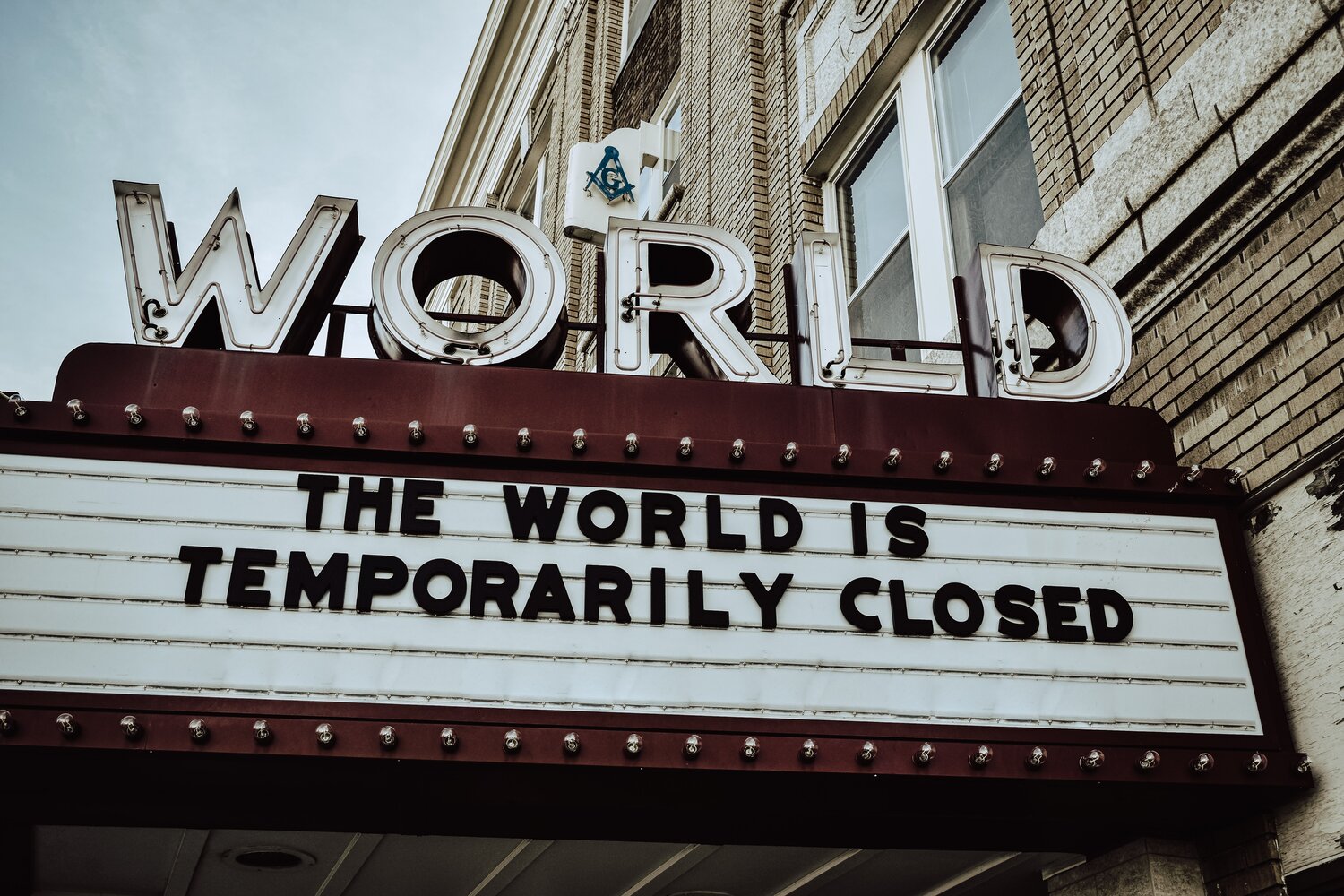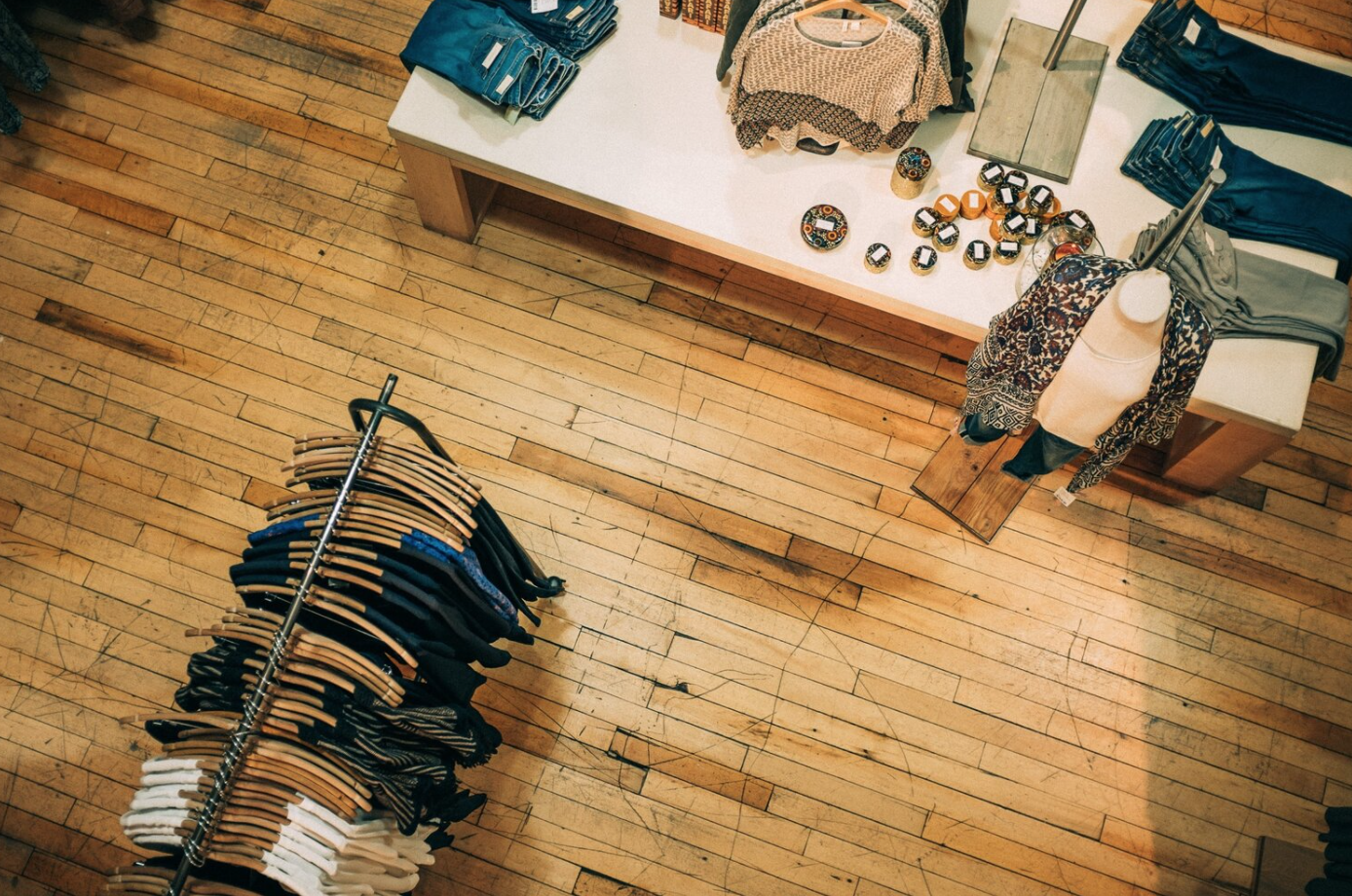This is the first post in our Evolving Industries series. Join us as we take a deep dive into changing markets, technologies, and consumer expectations, and learn how leading companies are surviving and thriving in some of the world’s most unpredictable industries.
The first law of retail is that it’s a crazy and difficult industry even in normal times. The second law of retail is that there’s no such thing as normal times.

Alon Zeltzer, CEO of XCVI
We sat down with Alon Zeltzer, CEO of fashion brand XCVI, to understand the world of affordable, higher-end retail and the changing industry trends. Like many others who were following news stories during the COVID-19 months (e.g., the growth of e-commerce sales and closing brick and mortar stores), we went into this interview thinking that the pandemic dramatically transformed the fashion and retail landscape.
But Zeltzer told us that these retail trends had been emerging since the 2008 recession. Although the fashion industry was indeed rocked by COVID-19, the slow evolution over the past several years actually helped prepare the retail industry for the pandemic. “It was gradual. It was slow. It was like torture, really,” Zeltzer remarks.
The XCVI Story
Established in 1996 (year XCVI in Roman numerals), this Los Angeles-based designer and manufacturer of contemporary women's clothing is in the niche market of lower-priced, higher-end fashion. Staying true to its DNA, XCVI has maintained a strong boutique presence over the past couple of decades and has expanded to include: (1) relationships with higher-end department stores (called “majors” in the industry) such as Neiman Marcus, Nordstrom, and Bloomingdales; and (2) e-commerce channels.
XCVI’s consumers are predominantly affluent women over the age of 45 and have different buying patterns from the typical contemporary woman, who might be persuaded by Instagram influencers and “fast fashion” trends.
What is Fast Fashion?
Fast fashion has been changing the retail landscape since the late 1990s when the common consumer was demanding fashionable designs at affordable prices. Rising demand, revolutions in supply chains, and increased purchasing power combined to give birth to a new industry, one of “high fashion at a low price.” This new trend required new ways of working; no longer was the seasonal calendar of traditional fashion houses enough. Now manufacturers had to optimize time to design, production, and delivery to their consumers.
A new crop of leaders around the world grew out of this trend, including Zara, UNIQLO, H&M, and GAP, among others. By constantly changing styles, these retailers were awarded with continuous engagement from the consumers and big profits, especially if they could “jump on a trend before the competition.”

While many traditional department stores started adopting this model, there are valid criticisms. Namely, in its “disposable fashion” approach, styles change quickly and pieces are often not of high quality because of the faster time-to-market and lower manufacturing costs.
Enter boutiques and labels, like XCVI, who close the gap between traditional, premium fashion labels and the rising giants of fast fashion. By focusing on high quality, stylish clothing at affordable prices, and having a strong presence at high-end brick and mortar department stores, XCVI has an affluent following in a niche industry.
That was the world until the 2008 recession. Brick and mortar stores were everywhere, offering styles for consumers across the socioeconomic spectrum. Fast fashion brands started emerging for the common consumer. Premium brands were continuing their seasonal cycle of styles for the high-end shopper. And new, boutique labels were popping up to fill the gap between the two. There was a good balance…until the economy came crashing down.
The 2008 Recession and Years Leading Up to 2020
“Business never came back as much as before the ‘08 crisis,” claims Zeltzer. When the market crashed, there was generally less shopping and less buying. What was once a shopper’s paradise at brick and mortar stores now stopped altogether or moved online and to smaller venues, like boutiques. A slow and gradual void started forming in the retail industry as high-end brick and mortar retailers re-strategized to bounce back to pre-2008 levels and brands like XCVI were forced to look to other channels to supplement their profits.
E-commerce and direct-to-consumer (D2C) channels started to gain traction in the three to four years prior to the COVID-19 pandemic. The market developed an appetite for these channels, and companies started getting better at reaching the consumer. “From a company perspective, there’s nothing you like more than a direct relationship with the customer,” Zeltzer tells us, explaining his new e-commerce and D2C strategy.
D2C channels, like pop-up stores, allowed XCVI to have a presence on both coasts, but that was a reach for a smaller company; they produced few gains. E-commerce, on the other hand, was growing fast. Zeltzer claims 100% year-over-year (YoY) growth without much investment on his part, though he acknowledges there was a significant learning curve at the beginning. It was the perfect combination of the right things happening at the right time, and Zeltzer leaned into the trend.

XCVI website
“Let’s double down on e-commerce,” Zeltzer told his team as he outlined his new targets for e-commerce and D2C channels, which he wanted to be 50% of the business. By growing the marketing expertise in-house, Zeltzer ensured XCVI had the right skills to pursue its new goals. These new initiatives brought with them more exposure, and XCVI was able to understand the causes of the void created by the recession and revive its wholesalers (i.e., the boutiques and high-end retailers).
“We were entering the pandemic with a lot of positive wind behind us,” Zeltzer tells us, smiling.
And then the COVID-19 pandemic hit.
The Roller Coaster that was COVID-19

“Those were some eerie times. I’ve gone through some battles in this business, but never experienced anything like it,” reminisces Zeltzer when asked about the first months of 2020. “It was all doom and gloom.”
In March and April 2020, everything stopped. Web sales dropped completely. The factories shut down. Strategic initiatives stopped.* “We had to wait and see if we would even have a business in a month,” he explains.
Like many other industries, XCVI was like a “deer in the headlights” for the first month or so, waiting and watching to see how the pandemic would unfold.
Then, out of nowhere, things started to change. One day in late April, a few web orders started trickling in. The next day, a few more. “And then, all of a sudden, something popped and everything exploded! It was the weirdest thing!” Zeltzer exclaims, delighted. He still struggles to explain the boom in sales. “We weren’t really marketing back then, because what do you even put out there?”
Yet it was evident they were doing extremely well. “We were behind,” he recalls. There were customer service issues related to the explosion of online sales and shipping orders backlogged. But given the nature of the COVID environment, it was difficult to fulfill the orders quickly and safely. Six-foot spacing requirements meant a maximum of eight people could work in the warehouse. They were working double and triple shifts just to meet demand.
While Zeltzer and his team are still trying to analyze those months, he attributes some of the success to XCVI’s portfolio and high-quality products. “There aren’t a whole lot of better stay-at-home clothes out there that I can think of. We’ve always been focused on casual, comfortable wear. They were peripheral to our core before, and now we’re chasing inventory.”
Since then, XCVI has made some changes, such as upgrading their shipping software, optimizing operations, and increasing their use of technology. But despite having new procedures around pods, work groups, zones, and multiple warehouse shifts, the new COVID environment has its fair share of challenges. After almost a year, Zeltzer claims that “it’s still weird. There are days when we have no one.”
Success in a Pandemic
Amid all the news of pandemic-related disasters hitting small- to medium-sized businesses in 2020, we were surprised to hear of XCVI’s success, so we asked Zeltzer what caused such unanticipated results. He gave three main reasons.
COVID was a great accelerator
“The pandemic was just an accelerator for the trends we were seeing before,” remarks Zeltzer. “The writing was already on the wall.”
E-commerce and D2C, initiatives that were once novel trends, morphed into survival strategies as many customers were now forced to stay at home. This has provided dramatic year-over-year (YoY) growth with figures of fifty to sixty percent.
Additionally, lessons from the fast fashion movement are paramount. It’s a volatile industry marked by quickly changing consumer preferences, long lead times, supply chain challenges, and even a touch of luck.
This isn’t all bad news, however. The normal wholesale calendar requires brands to finish their collections months before the release date in order to reach full production. This timeline doesn’t allow a full read on performance before coming up with collections. The D2C model provides a delayed development calendar, where brands can learn in real-time what needs to be changed in their collections.
In this more digital and direct environment, XCVI (among others) is able to get more immediate feedback on their “concepts” (or smaller collections where only a few hundred pieces are produced) and broaden their consumer base. By staggering the selection of fabrics, color palettes, and styles, Zeltzer and his team could shorten parts of the six-month calendar to two months.
This process of fine-tuning, producing, and testing of products is dependent on a good relationship with the factories and how much risk you’re willing to take. By sending out “teaser capsules” via email or merchandising on the site (i.e., providing a limited quantity preview of upcoming fashion items), Zeltzer’s team could quickly understand customer preferences and adjust production accordingly.

Agility and quick reactions were the difference between those who survived and those who did not
“You have to be flexible in your thinking, reaction to setbacks, and more,” advises Zeltzer. Nimble, quick reactions to rapidly evolving market trends and customer tastes are imperative to D2C marketing and sales. Having a strong data team, analyzing data, and becoming data-driven helped XCVI stay afloat.
Understanding data has been a personal passion for Zeltzer. He tells us that he started getting so fascinated with data that he decided to pursue a master’s in applied analytics. XCVI gets data from Google Analytics, Facebook, and Shopify, among other platforms, which helps them figure out which collections trend better, where pricing needs to be, and more.
Prior to 2020, XCVI had started some strategic projects, including a move to better analyze their data, which helped them shorten their production cycles and bring new products to market more efficiently. “Our idea was to know the data. We don’t want to miss out on the trends,” he tells us.*
By looking at the data, Zeltzer and his team focus on “minimizing the over- and under-projections” (i.e., making sure there is just enough inventory to meet demand) and growing their margins. Traditionally, the lead time required for a fashion line to design, manufacture, and market new products could be more than nine to ten months. Zeltzer says that under the right conditions, XCVI can bring to market test runs of 100 pieces or so in two months or less.
Zeltzer is still analyzing the COVID data, from which he hopes a lot of new insights will come forth. Some key questions he hopes to answer are better understanding the customers – were they new customers? What were their characteristics? Was there an apparent buying pattern? But he also must make the decision, “Do we want to draw insights from this type of event?”
The segment you were in played a role in your survival
“We’re still trying to analyze [the explosion]. Some of it has to do with our product,” reiterates Zeltzer.
XCVI has stayed true to its boutique origins but has expanded serving their clients through e-commerce and upper-end retailers. Although their consumer base of predominantly affluent women over 45 were less impacted by the pandemic, XCVI concentrates on developing quick, agile responses to market trends to stay current. And their success shows in the numbers.
Many have speculated that with customers staying home and not spending money on things like dining out, entertainment, or travel, they had more money to spend on home comfort. XCVI's product lines were very well-positioned for this trend in terms of style, quality, and price, and the market responded with great enthusiasm.
XCVI was lucky to pull through, whereas many of their competitors did not. “It’s sad,” he tells us. “They’re our competitors, but they’re also our friends and now they’re out of a job.” In addition to the diverse distribution channels, strategic initiatives (like business intelligence), and an affluent consumer base, XCVI had the added fortune of a diversified portfolio. The high-quality loungewear segment, which was once only a tangential part of their portfolio, was now selling more prominently.
Where is the future headed?
We asked Zeltzer about the initiatives XCVI is pursuing now, and he emphasized the importance of agility and quick reactions. He continues the initiatives he started pre-pandemic, including rapid prototyping with the design team, data analysis, and the right pricing strategy. “Price is a much bigger driver today than it was in the past,” Zeltzer tells us. “We have to be okay with a good quality pant at $68 instead of previously selling at upwards of $100, if that’s what people will buy.” By producing small batches of new products as test runs to see what sells quickly, XCVI can meet market demands as efficiently as possible.
“Are you looking out ahead, past the hump?” we asked. “Not yet,” responds Zelzter. “I don’t know what that’ll look like. Some of the changes that we made may be here to stick around.” While XCVI and other companies may be operating on a short horizon, in a very reactive market, Zeltzer assures us that this method of working is actually a “strong gain for us. We’re a healthy margin business.”
XCVI is on a path of continual acceleration, constantly striving to pursue growth, agility, and efficiency in this unpredictable industry amid equally unpredictable times. COVID is reshaping the retail fashion industry in ways that are likely to be permanent, but which we can't yet predict. “The risk is still out there,” Zeltzer cautions us. “We’re still hedging out bets.”
In the end, although the COVID-19 pandemic has turned our daily lives upside down, it was actually an accelerator of trends that were already in motion. While the pandemic resulted in the unfortunate demise of some players, it did not fundamentally alter the fashion retail landscape.
* In the months leading up to the pandemic, XCVI was engaged with Keyrus on some strategic data initiatives. Specifically, XCVI wanted to analyze its data to manage inventory better and leverage the sales information to prepare production accordingly (thereby minimizing over-projection). Keyrus helped XCVI build a data warehouse in Snowflake to bring together sales data from Shopify and stock data from the Inventory App, and report on these metrics together in Tableau (a leading data visualization tool). By centralizing the data and keeping a historical record, more meaningful insights could be drawn at the daily level. Now, XCVI could quickly identify the most and least profitable products/categories and act accordingly. They could perform price and discount analysis to optimize their pricing strategy. Finally, by bringing together multiple data sources, they could resolve previous data integrity issues by filling in missing fields, managing duplicates, and more.
________________
Matthew Zingariello, VP of M&T at Keyrus US, and Ina Benjamin, Data Strategy Consultant at Keyrus US, conducted the interview with Alon Zeltzer, CEO of XCVI. We collaborated extensively with Brian Maher, Technical Writer at Keyrus US, and thank him for his contributions to this article.
